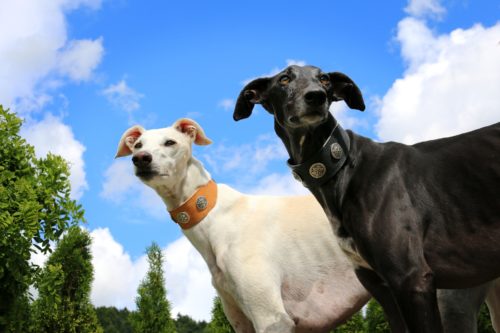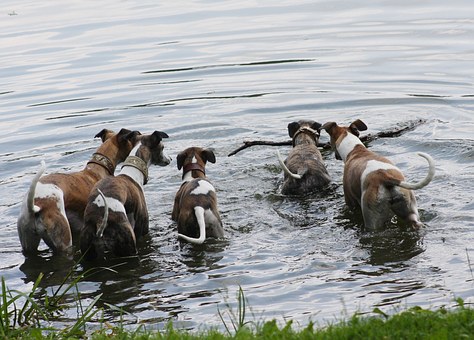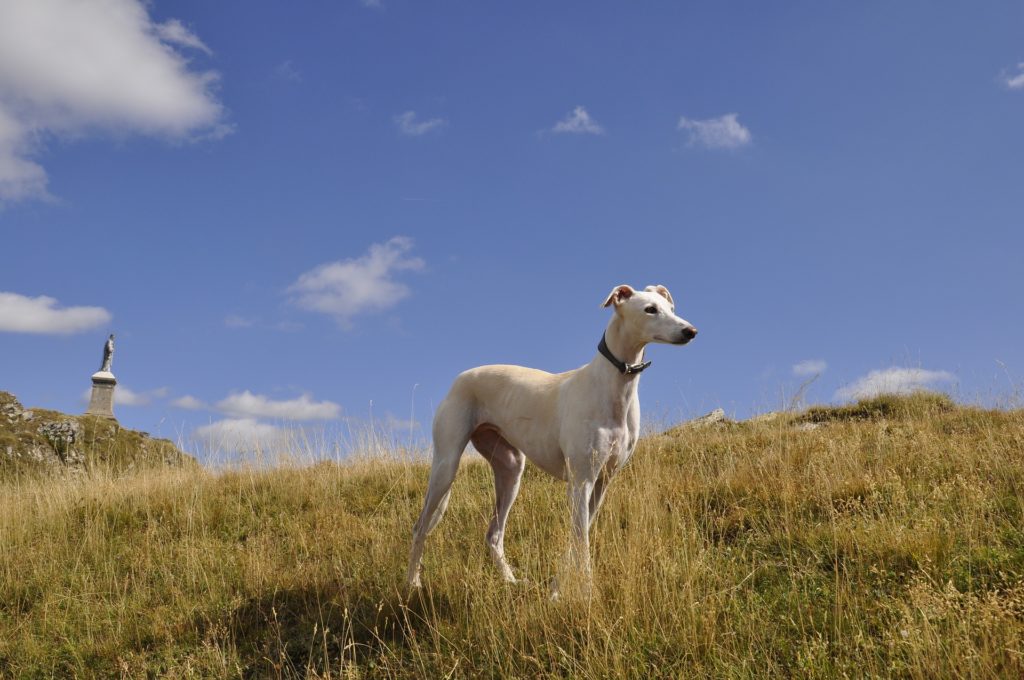Despite their pedigree as racing dogs, Greyhounds are actually very relaxed companions that are even well-suited to life in an apartment. Training a Greyhound typically is a fairly enjoyable process, and the dogs will usually learn basic commands rather quickly.
However, a lot of Greyhound training depends on the individual dog itself, and the situation which it came from. A Greyhound you got as a puppy from a loving breeder may take training quite differently than a retired racing dog that you’ve adopted who was kept in a kennel. Both can adapt and learn the rules of their new home, but one might take more patience than the other, it all depends on the individual circumstances.
That being said, there are some basic Greyhound dog training tips and behavioral tendencies that you should be aware of. The first of which is probably the most surprising to learn about this breed.
Exercise Requirements
You might think that a Greyhound will need to run around all day in order to be happy, but this actually isn’t true. They are indeed remarkable athletes with incredible speed, but for the most part, they are rather lazy animals. Despite their long history as racing dogs, Greyhounds actually have fairly low energy and do not require that much exercise.

A good, long daily walk is generally enough for a Greyhound. However, If your Greyhound isn’t given his daily walk, he may become bored and turn to destructive behavior.
They also may gain weight, which is bad for these athletes. While it is common for Greyhounds to gain a few pounds after retiring from the track, they shouldn’t gain more than that and should remain slender animals their entire lives.
Start Training When You Bring Your Greyhound Home
Whether you found a puppy or adopted a retired race dog, your Greyhound training should start as soon as you bring your dog home. They do have a tendency to be a bit stubborn and need to be incentivized to train, so make sure to keep a lot of healthy treats ready. These independent dogs will require a confident, consistent teacher who has some patience.
Socialize Them Early
Because Greyhounds are naturally shy, you’ll want to socialize your dog with other dogs as soon as you can. Again, if you adopted a retired race dog, you may have a tougher time getting him used to other dogs, while some may be perfectly fine — it all depends. But as with other dog breeds, socializing them early will be key to making them comfortable with other animals, rather than fearful.
Some Greyhounds will have a tough time with smaller dogs and other pets because of an instinct to hunt them. This will kick into another level if these animals run away from them. You’ll need to supervise your Greyhound around small animals for this reason. Sometimes this breeds instinct can become more powerful than their training, no matter how well-behaved they seem around other animals.
Likewise, when you are on walks, some Greyhounds will have a strong urge to take off after small animals like squirrels, so you’ll always want to keep your pup on a leash. With their speed, they can track down most animals, and you don’t want to get yourself into a bad situation, no matter how much you think you might trust your dog.
The “Sit” Command

You may notice as you begin training that your Greyhound seems to have difficulty with the “sit” command, but don’t fret, this is actually common in Greyhounds because sitting is uncomfortable for them.
Due to their slender body types, sitting is actually a rather unnatural position for a Greyhound, and when you tell your dog to sit, they will sort of balance on their tail.
Use Positive Reinforcement & A Gentle Hand
Greyhounds are a very sensitive and sometimes stubborn breed, so you’ll have to play nice during training and use positive reinforcement.
Make sure you are always gentle during Greyhound training, with a calm, consistent voice and lots of praise and treats. Greyhounds can generally pick up basic commands pretty quickly if they are trained properly, but if not, they can become quite fearful and become reluctant to train. Greyhound training should be rather easy, even for a first-time dog owner.
Crate & House Training
A lot of how long Italian Greyhound potty training will take depends on whether or not you got the dog as a puppy or adopted a retired racing dog. Puppies can typically learn to go to the bathroom outside fairly quickly, and some racing dogs will already have the habit well-instilled in them as well, but it all depends on the practices of their owner while they raced. If they have developed bad habits, it may take some time for them to learn their new routine. But for the most part, retired racing dogs will do well with crate training.




